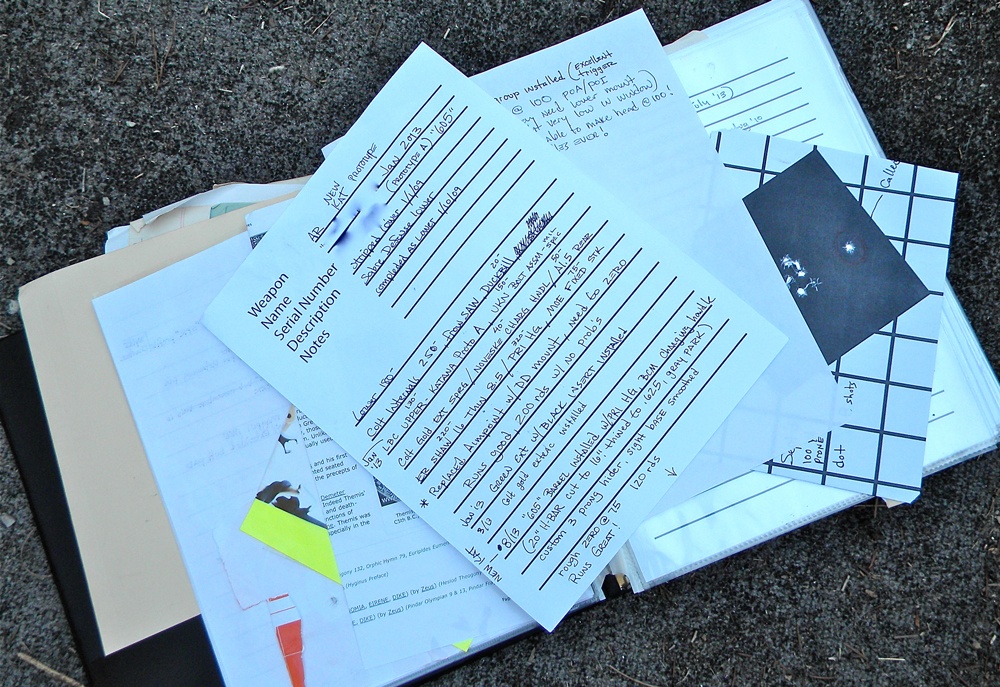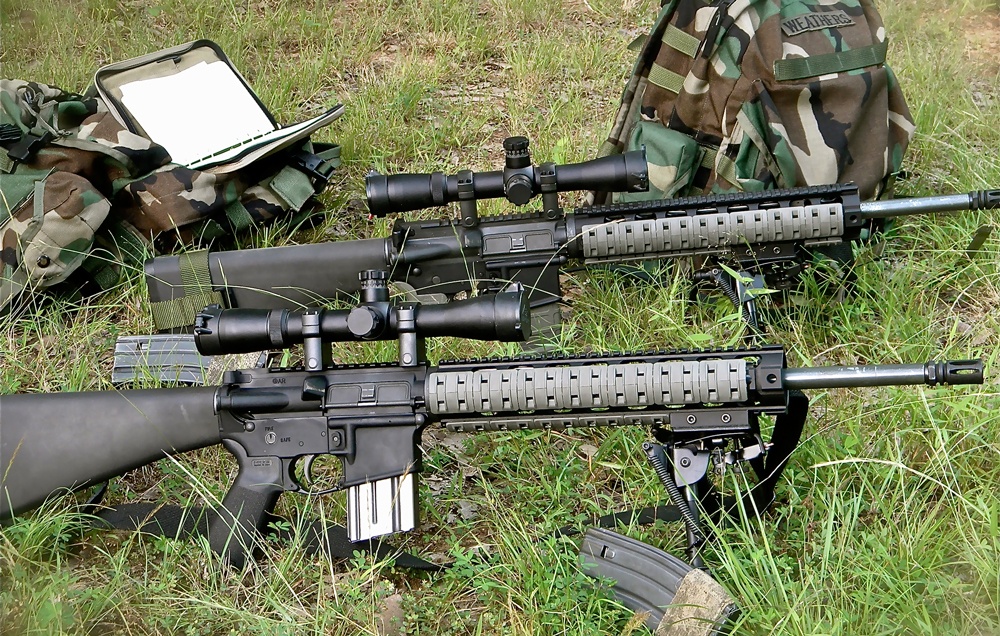

Serious shooters keep a DOPE or data book on particular weapons for a good reason. When called into duty, no matter the situation, they have a solid idea about how the firearm will perform.
Everyone who owns a precision rifle keeps a DOPE or data book on that weapon – at least they do if they are serious shooters. Typical information includes details on cold bore shots.
Normally the point of impact on the first shot fired from a clean, cold barrel will be slightly different from shots fired after that. You record each cold shot, building up enough data to know exactly where that first shot is heading.
By gathering and recording data, you know the difference between a shot fired when the air temp is a chilly 15 degrees and the humidity is low vs. a hot day of 95 degrees with humidity to match. You have a record of the changes that will occur if you switch from a 55-grain bullet to one weighing 75 grains. I recommend doing the same thing for every firearm you own.
Most of the people I know who get into firearms, no matter the reason, eventually end up with a small collection of weapons. After all, you need a few pistols for carry, a variety of rifles and carbines, and of course probably a dose of shotguns.
At some point it becomes difficult to keep track of everything, especially like when you changed out a buffer spring, how many rounds have been fired through a specific barrel, or what make bolt group is in a particular AR. The solution is to develop a log or data book for each firearm you own.
In my spec sheets I include detailed information about what parts were used to assemble that weapon. There is a record of when it’s been cleaned, how many rounds it’s fired, or when the recoil spring was last changed.
I keep track of when the battery was changed in the red-dot sight. When a part breaks, I know what brand it was, how long it lasted and what to replace it with. There are targets in the file so I know what group to expect from that particular weapon with specific type or brand ammo.
Keeping targets gives me a reference to look back at. If all the sudden AR #3 is shooting 3-inch groups at 100 yards instead of 1-inch groups, I know there’s a problem I need to look at.
Keeping this information is also good if you need to take your AR to a gunsmith for repairs or modifications. This way they don’t have to try guess about anything; it’s all written down and recorded for reference.

I’m an old school guy and keep written records. Plus, if I have a clean sheet of paper, I can draw out illustrations for documenting a certain point, or attach pictures to the file.
Yes, you could keep your notes on a computer, but remember that the act of writing something down helps implant it in the mind. Typing or entering data on a computer spreadsheet provides you with a record, but it doesn’t make the same mental connections.
For the average AR, you probably don’t need to record every shot or the weather conditions and the amount of info you would with a precision rifle. Unless of course your precision rifle is an AR, a Special Purpose Rifle, or SPR. But you do need to keep a record of all the different modifications made, bullet trajectory for different distances – including wind shifts – and other major details of that weapon.
Owning and using a firearm is serious business, especially if we’re talking about possibly using it for self-defense. Approach all the different aspects of this accordingly. Document everything about your weapons, just as you do with your training and practice.
Editor's Note: This article is an excerpt from AR-15 Skills & Drills.

Next Step: Get your FREE Printable Target Pack
Enhance your shooting precision with our 62 MOA Targets, perfect for rifles and handguns. Crafted in collaboration with Storm Tactical for accuracy and versatility.
Subscribe to the Gun Digest email newsletter and get your downloadable target pack sent straight to your inbox. Stay updated with the latest firearms info in the industry.

![Best Concealed Carry Guns In 2025 [Field Tested] Wilson Combat EDC X9S 1](https://gundigest.com/wp-content/uploads/Wilson-Combat-EDC-X9S-1-324x160.jpg)


![Best 9mm Carbine: Affordable PCCs [Tested] Ruger Carbine Shooting](https://gundigest.com/wp-content/uploads/Ruger-Carbine-Shooting-100x70.jpg)
![Best AR-15: Top Options Available Today [Field Tested] Harrington and Richardson PSA XM177E2 feature](https://gundigest.com/wp-content/uploads/Harrington-and-Richardson-PSA-XM177E2-feature-100x70.jpg)
